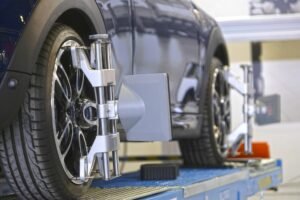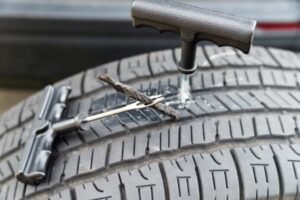Tire Replacement
Tire replacement is a crucial aspect of vehicle maintenance that ensures optimal performance, safety, and efficiency. Over time, tires wear out and can become damaged, compromising your vehicle’s handling and safety. Knowing when and how to replace your tires is essential for maintaining a smooth and safe driving experience.
Why is Tire Replacement Important?
- Safety: Worn-out tires can lead to reduced traction, longer stopping distances, and an increased risk of blowouts. Replacing tires in a timely manner ensures your vehicle can handle various road conditions safely.
- Performance: New tires provide better grip and handling, improving the overall performance of your vehicle. This is especially important in adverse weather conditions such as rain, snow, or ice.
- Fuel Efficiency: Worn tires can increase rolling resistance, leading to higher fuel consumption. Properly inflated and well-maintained new tires can improve fuel efficiency.
- Comfort: New tires contribute to a smoother and quieter ride by reducing road noise and absorbing road imperfections better than old, worn-out tires.
When to Replace Your Tires?
- Tread Depth: A tire’s tread depth is crucial for maintaining traction. Tires should be replaced when the tread depth reaches 2/32 of an inch (1.6 mm). You can use a tread depth gauge or the penny test to check this. If the top of Lincoln’s head on a penny is visible when inserted into the tread, it’s time for new tires.
- Age: Regardless of tread wear, tires should be replaced every six years due to rubber degradation. Check the tire’s manufacturing date on the sidewall (the last four digits of the DOT code indicate the week and year of manufacture).
- Visible Damage: Inspect tires regularly for cuts, cracks, bulges, or punctures that cannot be repaired. Any significant damage necessitates immediate replacement.
- Vibrations and Noise: Excessive vibrations or unusual noises while driving can indicate internal tire damage or uneven wear, suggesting the need for replacement.
How to Replace Your Tires?
- Choosing the Right Tires: Consult your vehicle’s owner manual or tire placard for the recommended tire size and specifications. Consider the type of driving you do and the typical road conditions when selecting new tires.
2. Removing the Old Tires: Lift the vehicle using a jack and secure it with jack stands. Remove the lug nuts and take off the old tires.

3. Inspecting Wheel Components: Check the condition of the wheel rims and other components for any signs of damage or wear. Clean the wheel hub to ensure a proper fit for the new tires.

4. Mounting the New Tires: Place the new tire onto the wheel, align it with the wheel bolts, and hand-tighten the lug nuts. Lower the vehicle slightly so that the tire touches the ground, then fully tighten the lug nuts in a star pattern to ensure even pressure.

5. Balancing and Alignment: It’s essential to balance the new tires to avoid vibrations and ensure a smooth ride. Additionally, check and adjust the wheel alignment to ensure even tire wear and optimal handling.

6. Final Check: After installing and balancing the new tires, perform a final inspection. Ensure that all lug nuts are securely tightened and that the tires are inflated to the recommended pressure.
Additional Tips
- Regular Rotation: Rotate your tires every 5,000 to 6,000 miles to promote even wear and extend their lifespan.
- Proper Inflation: Keep your tires inflated to the manufacturer’s recommended pressure to ensure safety and fuel efficiency.
- Routine Inspections: Regularly inspect your tires for signs of wear, damage, or low tread depth.
Tire replacement is a critical maintenance task that ensures your vehicle’s safety, performance, and efficiency. By replacing your tires at the right time and maintaining them properly, you can enjoy a smoother, safer, and more economical driving experience. Our skilled technicians at the repair shop are equipped to help you choose the right tires and provide professional installation and balancing services. Visit us today for all your tire replacement needs.



